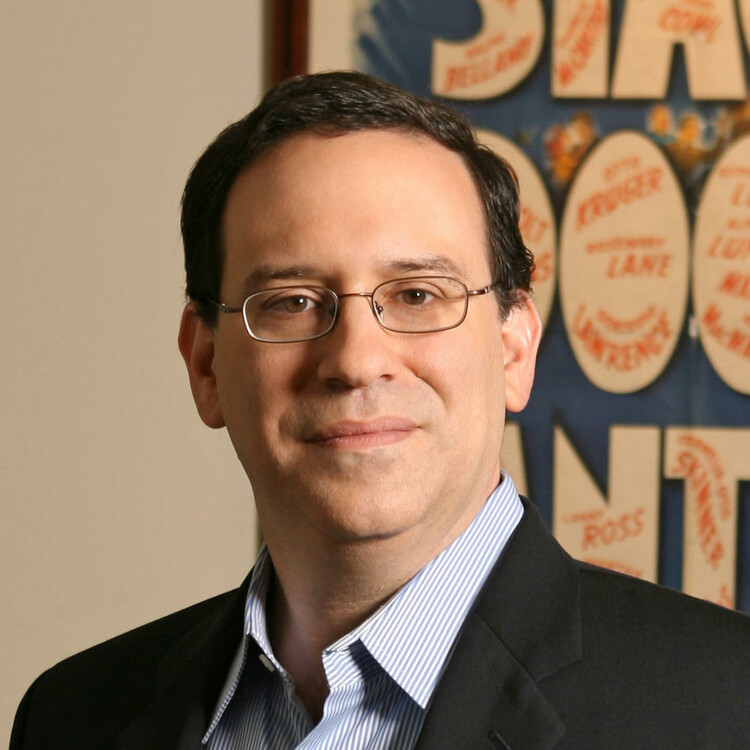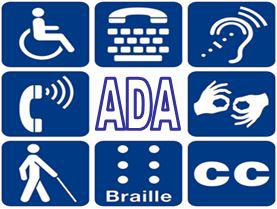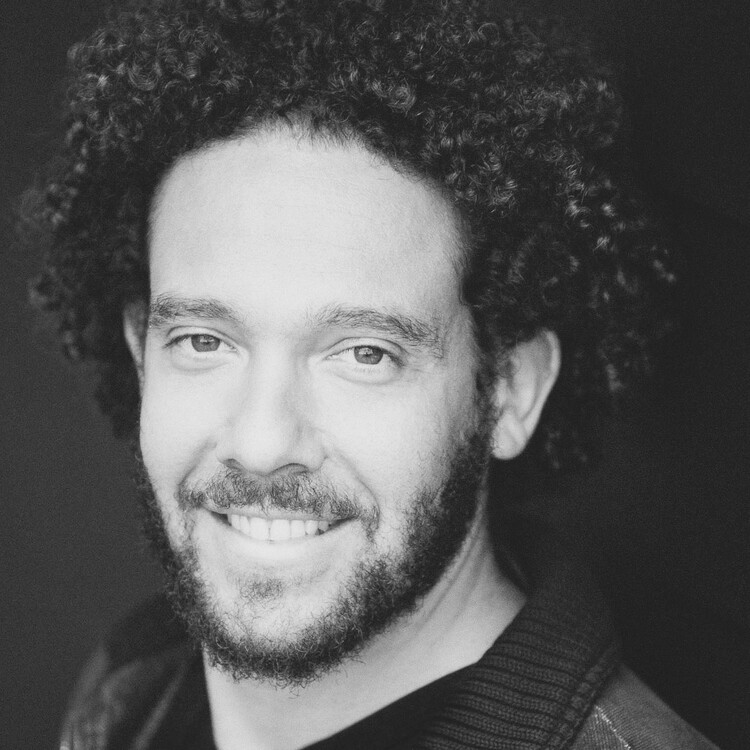When It Comes To Accessibility At Theatres, There Is A Law
This week on HowlRound, we're discussing Deaf theatre. This series is a result of the NEA Roundtable on "Opportunities for Deaf Theatre Artists" hosted by The Lark in New York City on January 20, 2016.
Prompted by the much-deserved attention generated by the Broadway run of Deaf West Theatre’s Spring Awakening, the National Endowment for the Arts’s New York City convening to discuss issues facing Deaf theatre and deaf theatre artists was an important step in the vitally necessary conversation about arts for the Deaf and disability communities. As someone who is not a member of those communities, but who works to be an ally to them, I felt honored to be in the room. I was part of the contingent designated only as observers—I was there to learn.
As theatre—seemingly the most broad-minded and forward-thinking of fields—works to address gender inequity (both at the most basic binary level and increasingly with attention to gender fluidity) and racial inequity, disability is too often an afterthought, if it is thought of at all.
In the structure of the afternoon, there was guided discussion among Deaf and hearing artists, recaps of key moments in Deaf theatre history, the exploration of models that have worked and others that succeeded for a time before floundering, accounts of needs and obstacles, the relating of personal experiences. All important, all informative.
At the end of each segment of the conversation, a few minutes were put aside for the observers to add brief remarks. While I cannot remember precisely the topic that had just been discussed, there was a call for comments regarding what more could be done to prompt so-called mainstream theatres to do more for both Deaf artists and Deaf audiences. With uncharacteristic brevity, I offered the following:
“There is a law called the Americans with Disabilities Act. It was passed twenty-five years ago. People need to be held to it.” It seemed an obvious statement, and a simple one, but it seemed to need saying.
Just as we are fifty years out from the passage of the Civil Right Act, yet our country remains deeply troubled and profoundly divided by racial inequality, the passage of the ADA was far from a panacea for the Deaf and disability community. Indeed, even as diversity and inclusion have been recognized as a necessity by a significant portion of the theatre community, those efforts rarely extend to disability. As I say, I am not a member of that community, only an observer and ally, but as theatre—seemingly the most broad-minded and forward-thinking of fields—works to address gender inequity (both at the most basic binary level and increasingly with attention to gender fluidity) and racial inequity, disability is too often an afterthought, if it is thought of at all.
“Oh, we do an open captioned performance for every show.” “Have you heard about our new relaxed performances for audiences who have family members with autism?” “We’ve had large print programs for years.”
These aren’t recounted in any way to diminish these typical responses to questions about how theatres accommodate audiences with disabilities. They’re important. But they’re only the basics. Consider the following, all of which I’ve heard more than once:
“They need an ASL interpreter for their audition? Don’t they know someone who will volunteer to do it for them?” “Well it’s only a couple of steps up into the space. Can’t they manage that?” “The service elevator is wheelchair accessible.” “We don’t do signed performances anymore. They’re too expensive and after all, everyone can use open captioning even if they don’t know ASL.” “Yes, we have accessible seats, but there’s only one companion seat next to each one.” “I’m sorry, no one gets a copy of the script pages in advance of the audition.” “We’re in an old building and there’s no room (or it’s too expensive) to make it fully accessible.”
It would take too long to recount why each of these statements is problematic—and the comments in the first group are not without their issues as well. I am no expert on the ADA, but it provides a basic tool by which to measure efforts at true accessibility, namely the phrase “reasonable accommodation.”
If decency or altruism are not enough to motivate theatres to make themselves accessible, then the provisions of the ADA should be.
As theatres examine, as I hope they already are or soon will, their practices of accessibility not only for audiences, but for artists and staff, they should first think about what reasonable accommodation can be. Providing interpreters for the Deaf is reasonable; expecting Deaf actors to find and pay for their own is not. Building a ramp, even a temporary one, to allow wheelchair users access to a space is reasonable; expecting people who cannot walk to suddenly do so, or expecting them to submit to being bodily lifted by strangers, is not.
If decency or altruism are not enough to motivate theatres to make themselves accessible, then the provisions of the ADA should be. Theatre owners have been sued by the government for failing to comply with the law. The defense of, “Oh, we’re just a small not-for-profit” won’t help you—the ADA doesn’t consider your tax status or your budget size.
The Americans with Disabilities Act is not an obscure legal provision. It’s easily found online, along with detailed guides for implementation. But a great deal of it is common sense, especially if one has the capacity for empathy, and the ability to engage with the world through the perspective of others. Is the ADA a tool that people with disabilities may need to be reminded to use (dare I say wield) in conjunction with the arts? Perhaps it is. But there’s no reason why theatres can’t proactively review and bring themselves into compliance with it. If equity, diversity, and inclusion are truly goals for the field, accessibility should be as well. And not just because it’s the law.




Comments
The article is just the start of the conversation—we want to know what you think about this subject, too! HowlRound is a space for knowledge-sharing, and we welcome spirited, thoughtful, and on-topic dialogue. Find our full comments policy here
In October 2016, Gallaudet University will hold a roundtable discussion with members of the DC theater community to address exactly these issues. Sign up at www.gallaudet.edu/firstfolio if you'd like updates.
One of the wonderful things that Deaf West's production of Spring Awakening exemplified, is the ability to produce a musical that is "next to universal" theater. A performance that people with disabilities and those of us who don't yet have a disability can enjoy while sitting side-by-side. (If you live long enough, you will have a disability at some point in your life). I would love to see a movement toward a Universal Theater (similar to the concept of Universal Design). It starts with the writers and directors. Spring Awakening proved that we can have a musical that works for people who are deaf as well as those who are not -- and all of us watching the same performance at the same time and looking in the same direction. I can imagine a play that adds another layer of accessibility for people who are blind. Playwrights could creatively use dialogue that accomplishes what Audio Description would be doing -- but make it one universal play, not a play with add-ons. Wearing headphones for Audio Description, or having to look off to the side to see the ASL interpreter (while everyone else is looking center state), divides us into "us" and "them." We are all one. Universal Theater will never be perfect and never truly universal -- neither is universal design, but it is a step in the right direction.
This summer, I'll be teaching a course at Duke on Arts Accessibility -- as part of it, we'll be surveying the local arts organizations and assessing their accessibility for people with disabilities.
As a disabled actor,now mostly retired due to the continued challenges created by Polio, I have seen accessibility improve n some places, but not in most. I have also discovered that young artist are often welcoming of disabled colleagues, while many marginally older actors are not. We need to find ways to tell the stories of our lives, and to have those stories told by disablility savvy theatre professionals, in luding those with disabilities.
Here are some good resources if you need help getting started (these are just a handful, there are many more!):
-- The Kennedy Center hosts the annual Leadership Exchange in Arts and Disability (LEAD) Conference: http://kennedy-center.org/LEAD
-- NEA Accessibility Resources: http://www.arts.gov/accessi...
-- Kennedy Center TipSheets and Webinars: http://education.kennedy-ce...
-- Check with your local ADA Center for local insights
-- Many cities have a local access network for support and training